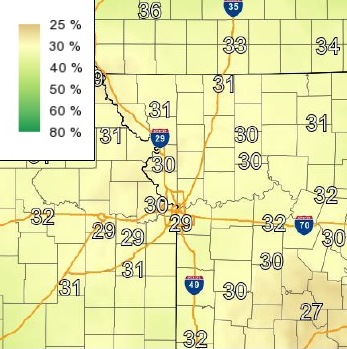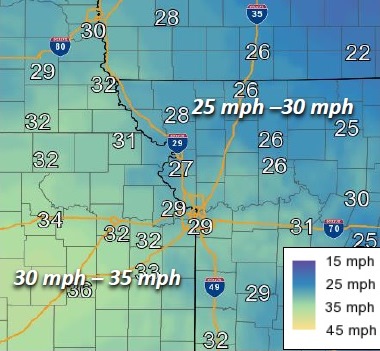An idea to take some police officers away from the west side of Kansas City, Kansas, and move them to the east side met with criticism on Thursday night from Unified Government Commissioner Mike Kane.
“So you want to expose the people out west to more danger, because what you’re going to do, when you move them, you leave us exposed,” Kane said during a Unified Government meeting on the police efficiency study. “That’s unacceptable.”
Kane said maybe the UG needs to hire more police officers to cover the east side of town, but “when we say we want to take officers out west, which we don’t have enough as it is now, and want to reduce them even more, that doesn’t work for me and it shouldn’t work for the commission.”
He said he doesn’t think it’s fair to people out west to be underserved as they are now.
Kane, who represents the 5th District in western Kansas City, Kansas, made his remarks during a presentation of the law enforcement efficiency study March 2 at the UG Commission special meeting. Byron Pipkin, a senior manager with the Matrix Consulting Group, presented the study’s findings.
The study found that the East Patrol, located in Kansas City, Kansas, Police Headquarters on Minnesota Avenue, handled 67 percent more calls than the other patrol stations. The East Patrol had 29,875 calls, or 31.9 percent, during the year-long study period; the West Patrol at 81st and State Avenue handled 20,062 calls or 21.4 percent; the South Patrol, with a new police station under construction near the Walmart Neighborhood Market, handled 21,508 calls or 23 percent; and the Midtown Patrol, at Indian Springs, handled 18,431 calls, or 19.7 percent.
Each patrol area has from 40 to 46 officers, according to the study. The consultant said there were enough officers, they might need to be reallocated, however.
Pipkin recommended to continue to look at these numbers and to move officers from the West Patrol area to the East Patrol area to balance the workload. He responded to Kane that it was an appropriate question – whether to move police officers or to add more police officers – for policymakers, the police chief and sheriff, to consider.
He said probably the biggest recommendation of the study is that the Wyandotte County Sheriff’s Office should eliminate its regular response to calls for service, and the Police Department should handle the response to all calls for service. Currently, sheriff’s deputies respond to about 5 percent of the calls.
It would be a simpler system, he said, and residents who need to follow up would know which agency to contact for information.
Commissioner Hal Walker remarked that Chicago had handled patrols similarly to Kansas City, Kansas, with both county and city police on the streets, providing more coverage.
Pipkin said the study recommended reducing six sheriff’s deputies who were patrolling and adding six police officers who would patrol.
Another recommendation would be to increase the sheriff’s deputies by six in other work units to meet needs and reduce overtime, he said. That would include three deputies in the transportation unit, one deputy in the tag enforcement unit and two deputies in the offender reporting unit.
Commissioner Gayle Townsend also was concerned that there would not be enough officers to patrol the east side of Kansas City, Kansas. She told Commissioner Kane, “I would love to trade the need for the people.”
Pipkin said there would be the same level of service; it would just be a change in the agency that shows up.
Commissioner Melissa Bynum asked if there was a need for a new patrol station in the northeast area. Also, she asked if there was a community survey involved, and was told that was not included in the scope of the study.
The study also looked at response time in calls for service.
The average response time for top priority calls was 9.5 minutes, including .61 minute for call processing, 2.9 minutes for waiting in queue, 5.9 minutes for travel time.
Pipkin said he thought there could be something off with the data on queue times. From talking with the chief, he said if an officer is available for a top priority incident, he or she will go, and there are occasionally times when all officers are already out, but that it is not at an extreme level.
Some of the statistics changed when the Police Department went to a two-officer car deployment in August of last year, according to Pipkin. The new data showed an increase of about 3.5 minutes in top priority calls. Pipkin said it was “very preliminary” data. Some changes may have occurred when the department went from five police cars with one officer in them, to three cars with two officers in them, he added.
Pipkin said policymakers should look at proactive time and committed time of the officers. The average time handling community-generated calls is 55 percent of the total work hours, while the average proactive time is 45 percent. Committed time included the time responding to the call, reports to be written, and the time to book the inmates. The proactive time includes traffic stops, putting gas in the car, meeting with the supervisor, and community meetings, he said.
These percentages change with the time of day, with fewer calls for service from 4 a.m. to 8 a.m.; however, a minimum level of officers are needed to respond to emergencies, he said. If some shifts don’t have enough proactive time, they may not be able to do other things such as check on graffiti, meet with youth, or provide police presence at a park, he added. He said 45 percent was a reasonable figure to target and maintain.
The Police Department would need three more officers than current staffing if it will handle all responses to calls for service, and maintain the 45 percent proactive time, he said.
The study also recommended some police officer positions, such as crime scene investigators and property-evidence room officers, to become civilian staff. In addition, there is a need for more staff and improvements for animal services, according to the report.
Commissioner Walker also advocated drones for future police work. He mentioned that a $5,000 drone could go up and down a street, identifying buildings that needed code enforcement work, saving money for the department. Pipkin said the topic was very controversial right now in some areas, and most agencies are not using them because of community concerns. There was a significant level of outcry in his community about privacy and government intrusion, he added. There are appropriate uses for law enforcement, but what those uses are, and the types of circumstances where they could be beneficial, are in the early stages of discussion and development, he said.
There were other study recommendations, and the law enforcement study is expected to be posted on the UG website Friday at www.wycokck.org.
According to UG officials, there are plans to discuss the study’s recommendations again at future meetings.



